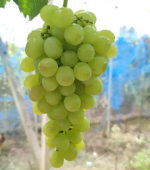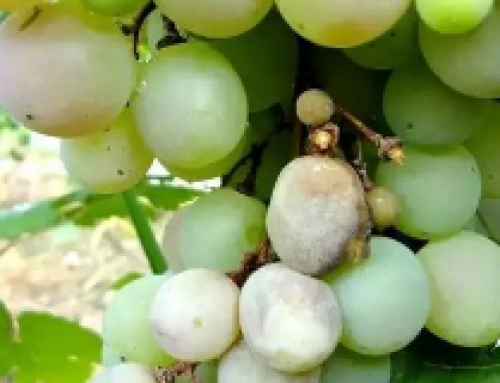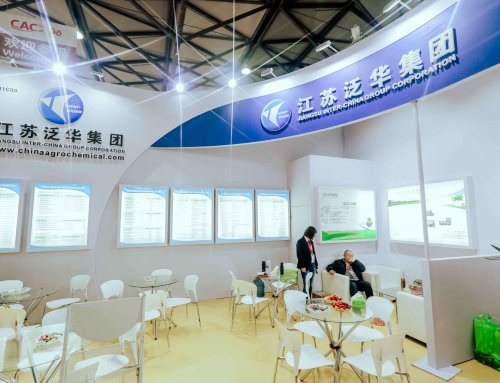Pyraclostrobin is a kind of methoxy acrylate fungicide with pyrazole structure. As a respiratory inhibitor, it inhibits mitochondrial respiration by blocking electron transfer at the cytochrome bc1 complex, so that mitochondria cannot provide the energy (ATP) required for normal cell metabolism, thus achieving sterilization effect. Pyraclostrobin is also a hormone-type fungicide, which can produce positive physiological regulation on crops.
Pyraclostrobin is a fungicide with protectant, curative, and translaminar properties. It has wide bactericidal spectrum, high bactericidal activity, long duration of efficacy, and has a health effect on plants, which can improve crop resilience, improve crop quality and increase yield. Pyraclostrobin has a good control on plant diseases caused by various types of fungal pathogens such as Ascomycetes, Basidiomycetes and Deuteromycetes, and is widely used in the disease control of fruit trees, vegetables and grains. Pyraclostrobin can also be mixed with other fungicides, which can not only cooperate with the killing mechanism, expand the bactericidal spectrum, but also delay the generation of resistance.
In the list of global fungicide single product ranking, pyraclostrobin has always been the leader, and its market position is second only to azoxystrobin. In 2014, pyraclostrobin had global sales of $1.00 billion. South and North America accounted for 71%, while Asia accounted for 3%. Asia and Africa account for more than 50% of the world’s agricultural area, so countries in Asia and Africa still have great market potential.
Pyraclostrobin suspension concentrate is the mainstream dosage form at present, there are many difficulties in processing:
① After storage at 54±2 oC, the particle size grows, and the suspension concentrate pastes and solidifies, or after storage at 54±2 oC, the suspension concentrate will paste and solidify at room temperature;
② When placed at room temperature for a long time, the particle size grows significantly, the efficacy decreases, and in severe cases, it will paste and then solidify;
③ The melting point of pyraclostrobin is low, and it is easy to be melted by heat during the sanding process, which will bring unstable factors to the suspension, and in serious cases, it will cause caking and blockage;
④ The compound preparation has poor stability, especially when it is compounded with epoxiconazole and difenoconazole, etc., it is easy to crystallize and then paste. Now we have succeeded in solving these problems.
Our product is a mixture of pyraclostrobin with difenoconazole. This compound product has a wider bactericidal spectrum and higher bactericidal activity, while delaying the generation of resistance. Testing the efficacy of our product was carried out by Institute of Zhenjiang Agricultural Sciences Jiangsu Hill Region. It can be seen that our product has better efficacy in controlling grape anthracnose. During the application, no phytotoxicity symptoms were found in plants due to the application of our product.
Table 1: Field efficacy trial results of Pyraclostrobin 250g/L+Difenoconazole 150g/L SC against grape anthracnose
| Treatment | Dilution fold | The mature stage | ||
| Control efficiency, % | Significance of difference | |||
| 5% | 1% | |||
| Our product | 3000 | 78.69 | a | AB |
| Our product | 1500 | 98.13 | a | A |
| Compared product | 3000 | 7.16 | b | B |
| Compared product | 1500 | 69.22 | a | AB |
| Control | ||||
 |
 |
| Figure 1. Our product | Figure 2. Compared product |
Our product has a good control effect on grape anthracnose. At the same concentration, our product is better than other products.
How to use the product
| Crop | Target | Application Time | Dosage rate | Method |
| Grape | Powdery mildew | Before or at the early stage of the disease | Dilute 1500-2000 folds | Spray |
| Grape | Anthracnose | Dilute 1500-3000 folds | Spray | |
| Watermelon | Gummy stem blight | 300 – 450 mL/ha | Spray | |
| Peach | Cercospora shot hole | Dilute 3000 -5000 folds | Spray | |
| Apple | Alternaria leaf spot | Dilute 4000 -5000 folds | Spray | |
| Banana | Scab | Dilute 2000 -3000 folds | Spray | |
| Banana | Leaf spot | At the early stage of the disease | Dilute 2000-3000 folds | Spray |
| Apple | Brown spot | Dilute 3000 -4000 folds | Spray | |
| Chili | Anthracnose | 225-300 mL/ha | Spray |
1. Spray evenly and thoughtfully to ensure the prevention effect.
2. Do not use in wind or 1 hour before rain.
3. Do not mix with alkaline pesticides.
4. Fungicides in other mechanisms are recommended to use by turns to delay resistance.
5. Apply three times at most for every crop cycle. Spray every 10 days.
Pls mail to tom@deanpestcontrol.com
PLEASE MAIL TO US FREELY







